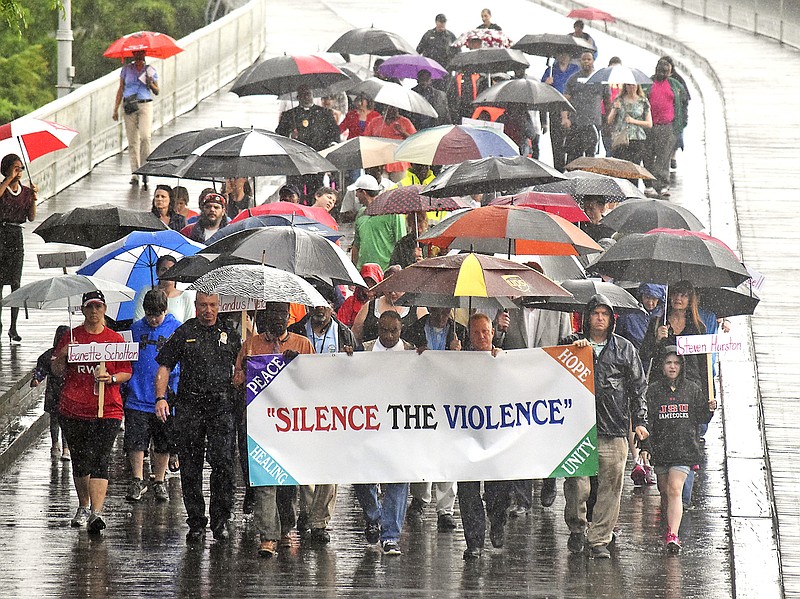For the average Chattanoogan, the chance of being shot or killed in the city is practically nil.
For the estimated 1,300 gang members in the city, the likelihood is much higher.
"Chattanooga is pretty safe - if you're not out at 3 in the morning selling crack, or breaking into cars, or shooting at other people," Lt. Glenn Scruggs, who heads the Chattanooga Police Department's violent crime unit, told Times Free Press reporter Shelly Bradbury that he often explains to people.
Indeed, 58 percent of the non-fatal shootings in the city from 2013 to 2016 have involved gang members, and 50 percent of the fatal shootings involved gang members.
If fatal and non-fatal shootings involving domestic disputes were to be added to the numbers involving gang members, the chances of such a shooting involving a random Chattanoogan would drop even further.
It's tempting to read the sad facts about the gang members who spoke to Bradbury for a report in Sunday's edition - and gang members in general - and conclude nothing can be done to turn around this small - less than 1 percent - segment of the population.
To wit: He dropped out of school; he was spending time with the "wrong people"; he was 13 and got his mother's gun out; he found out his girlfriend was pregnant; he joined a gang in middle school; the gang taught him how to be a man; "we're sleeping with the same girl and we're in opposite gangs."
But how callous would we all be if we believed nothing could be done?
It's also tempting to read the scenarios and believe it's as simple as the gang members choosing the right road instead of the wrong one. Certainly, there is personal responsibility involved in turning around one's life, but the problems are caught up in far more than that.
Again, aspects of Bradbury's report explain why: He was the son of a single mother who worked long hours. He found the gang provided, structure, mentorship and male role models. Guns are part of urban culture, accessories like a belt or a hat or a watch.
Yet, how devoid of truth are those who blame it all on poor schools, not enough jobs and poverty.
Indeed, if there were a solution, larger urban areas like Kansas City and giant metropolises like Chicago wouldn't have the same problems on a grander scale.
But it's why the city of Chattanooga has tried the Violence Reduction Initiative. It's why the Chamber of Commerce is pushing its Chattanooga 2.0 initiative to better all schools. It's why many local businesses have set aside slots this summer for internships.
And it's why those involved must make the hard decision to simply stop doing what they're doing.
Then, finally, all of Chattanooga could be safe.

